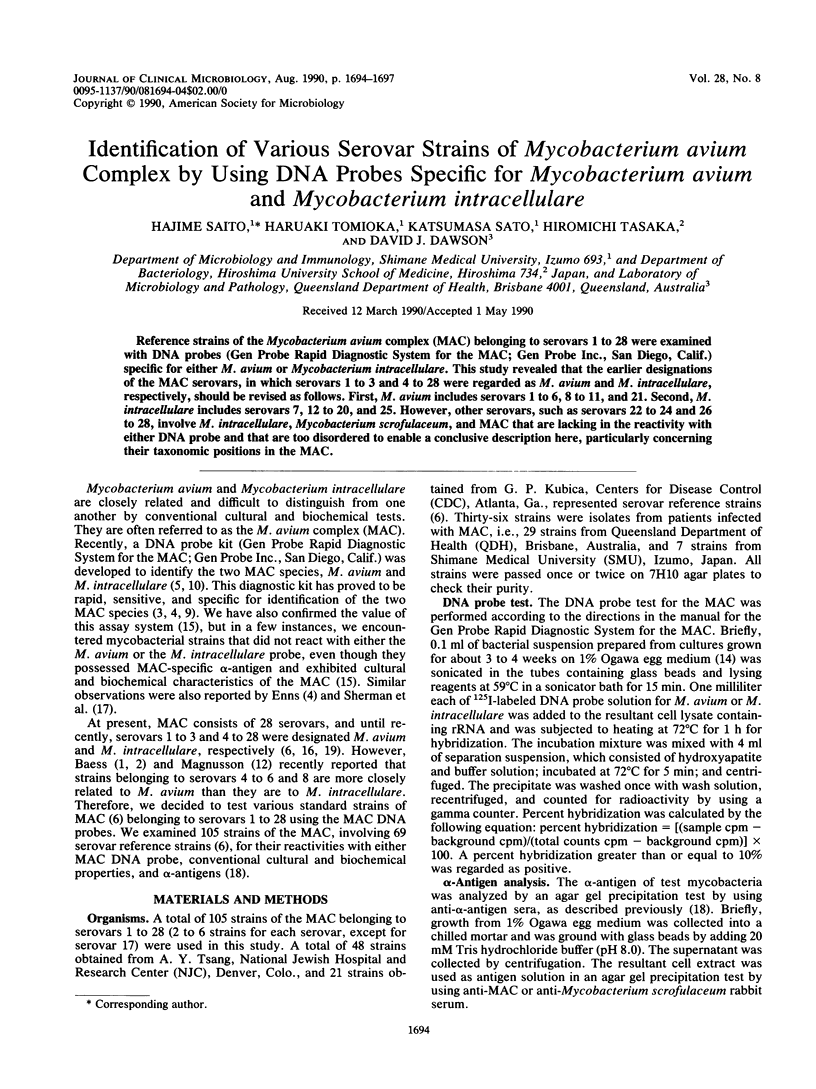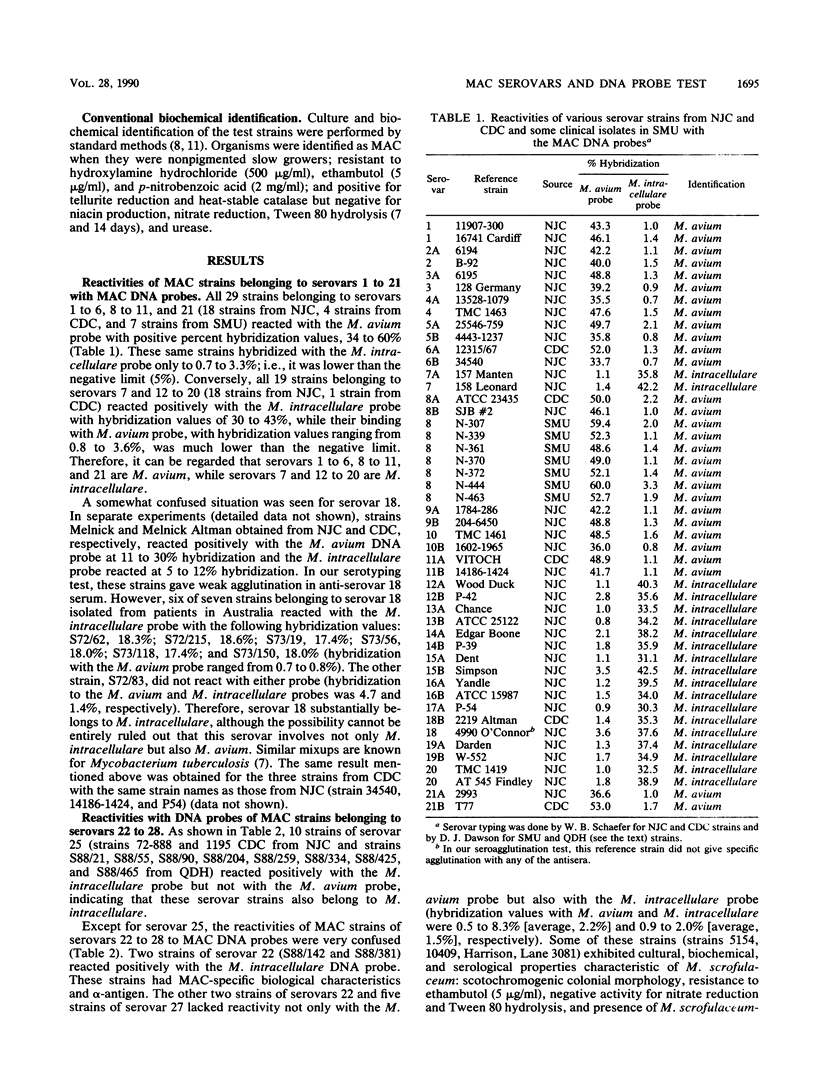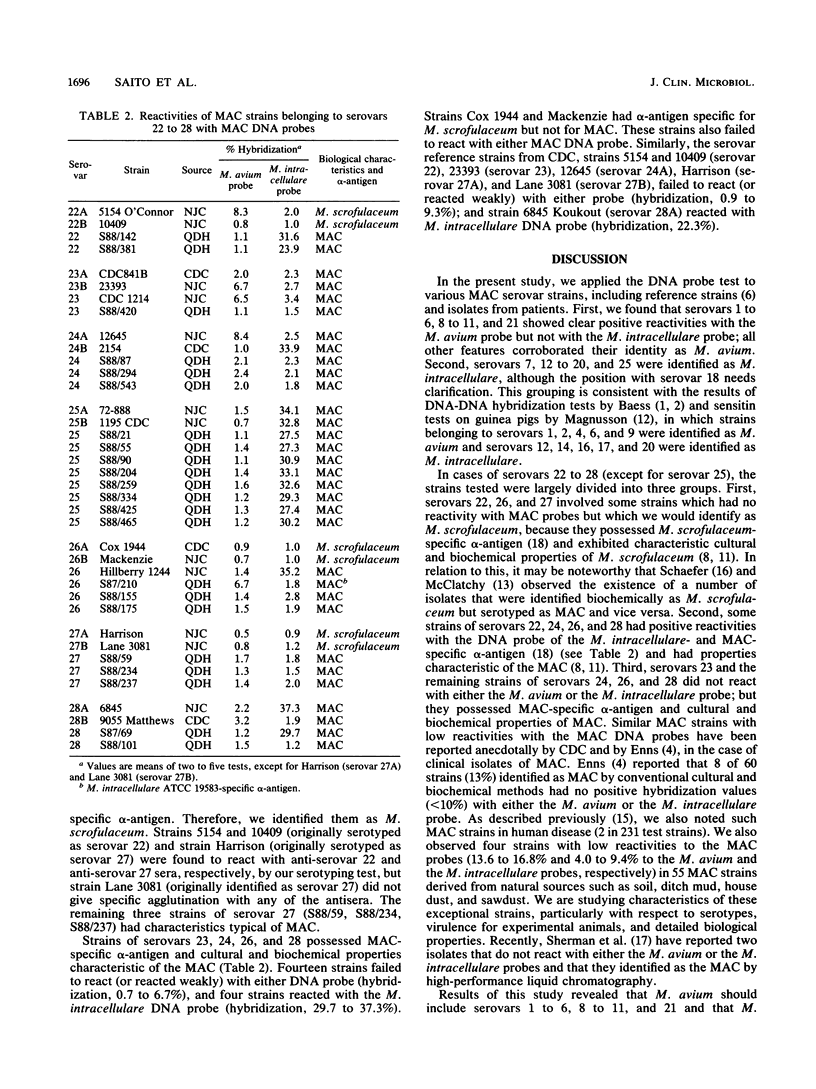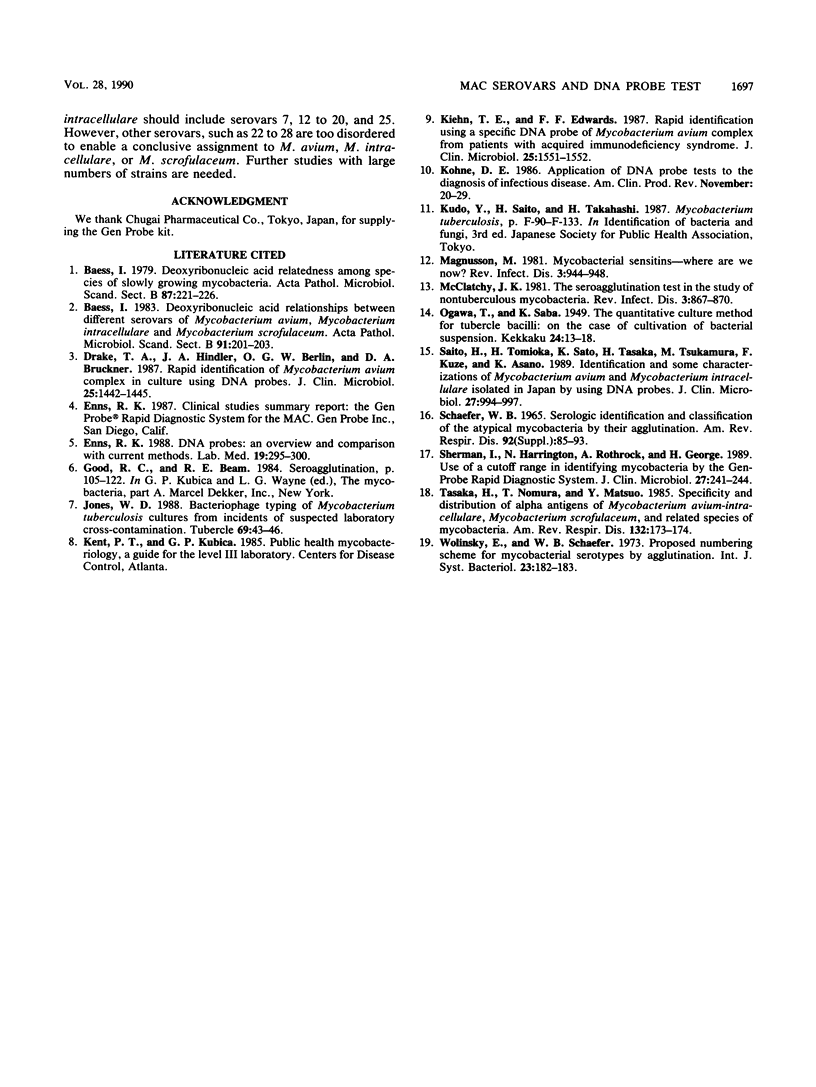Abstract
Reference strains of the Mycobacterium avium complex (MAC) belonging to serovars 1 to 28 were examined with DNA probes (Gen Probe Rapid Diagnostic System for the MAC; Gen Probe Inc., San Diego, Calif.) specific for either M. avium or Mycobacterium intracellulare. This study revealed that the earlier designations of the MAC serovars, in which serovars 1 to 3 and 4 to 28 were regarded as M. avium and M. intracellular, respectively, should be revised as follows. First M. avium includes serovars, 1 to 6, 8 to 11, and 21. Second, M. intracellulare includes serovars 7, 12 to 20, and 25. However, other serovars, such as serovars 22 to 24 and 26 to 28, involve M. intracellulare, Mycobacterium scrofulaceum, and MAC that are lacking in the reactivity with either DNA probe and that are too disordered to enable a conclusive description here, particularly concerning their taxonomic positions in the MAC.
Full text
PDF



Selected References
These references are in PubMed. This may not be the complete list of references from this article.
- Baess I. Deoxyribonucleic acid relatedness among species of slowly-growing mycobacteria. Acta Pathol Microbiol Scand B. 1979 Aug;87(4):221–226. doi: 10.1111/j.1699-0463.1979.tb02430.x. [DOI] [PubMed] [Google Scholar]
- Baess I. Deoxyribonucleic acid relationships between different serovars of Mycobacterium avium, Mycobacterium intracellulare and Mycobacterium scrofulaceum. Acta Pathol Microbiol Immunol Scand B. 1983 Jun;91(3):201–203. doi: 10.1111/j.1699-0463.1983.tb00033.x. [DOI] [PubMed] [Google Scholar]
- Drake T. A., Hindler J. A., Berlin O. G., Bruckner D. A. Rapid identification of Mycobacterium avium complex in culture using DNA probes. J Clin Microbiol. 1987 Aug;25(8):1442–1445. doi: 10.1128/jcm.25.8.1442-1445.1987. [DOI] [PMC free article] [PubMed] [Google Scholar]
- Jones W. D., Jr Bacteriophage typing of Mycobacterium tuberculosis cultures from incidents of suspected laboratory cross-contamination. Tubercle. 1988 Mar;69(1):43–46. doi: 10.1016/0041-3879(88)90039-6. [DOI] [PubMed] [Google Scholar]
- Kiehn T. E., Edwards F. F. Rapid identification using a specific DNA probe of Mycobacterium avium complex from patients with acquired immunodeficiency syndrome. J Clin Microbiol. 1987 Aug;25(8):1551–1552. doi: 10.1128/jcm.25.8.1551-1552.1987. [DOI] [PMC free article] [PubMed] [Google Scholar]
- Magnusson M. Mycobacterial sensitins: where are we now? Rev Infect Dis. 1981 Sep-Oct;3(5):944–948. doi: 10.1093/clinids/3.5.944. [DOI] [PubMed] [Google Scholar]
- McClatchy J. K. The seroagglutination test in the study of nontuberculous mycobacteria. Rev Infect Dis. 1981 Sep-Oct;3(5):867–870. doi: 10.1093/clinids/3.5.867. [DOI] [PubMed] [Google Scholar]
- Saito H., Tomioka H., Sato K., Tasaka H., Tsukamura M., Kuze F., Asano K. Identification and partial characterization of Mycobacterium avium and Mycobacterium intracellulare by using DNA probes. J Clin Microbiol. 1989 May;27(5):994–997. doi: 10.1128/jcm.27.5.994-997.1989. [DOI] [PMC free article] [PubMed] [Google Scholar]
- Schaefer W. B. Serologic identification and classification of the atypical mycobacteria by their agglutination. Am Rev Respir Dis. 1965 Dec;92(6):85–93. doi: 10.1164/arrd.1965.92.6P2.85. [DOI] [PubMed] [Google Scholar]
- Sherman I., Harrington N., Rothrock A., George H. Use of a cutoff range in identifying mycobacteria by the Gen-Probe Rapid Diagnostic System. J Clin Microbiol. 1989 Feb;27(2):241–244. doi: 10.1128/jcm.27.2.241-244.1989. [DOI] [PMC free article] [PubMed] [Google Scholar]
- Tasaka H., Nomura T., Matsuo Y. Specificity and distribution of alpha antigens of Mycobacterium avium-intracellulare, Mycobacterium scrofulaceum, and related species of mycobacteria. Am Rev Respir Dis. 1985 Jul;132(1):173–174. doi: 10.1164/arrd.1985.132.1.173. [DOI] [PubMed] [Google Scholar]


